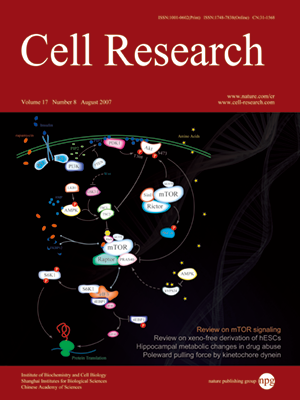
Volume 17, No 8, Aug 2007
ISSN: 1001-0602
EISSN: 1748-7838 2018
impact factor 17.848*
(Clarivate Analytics, 2019)
Volume 17 Issue 8, August 2007: 666-681
REVIEWS
Expanding mTOR signaling
Qian Yang1,2 and Kun-Liang Guan1,2,3
1Life Sciences Institute, Ann Arbor, MI 48109, USA
2Department of Biological Chemistry, Ann Arbor, MI 48109, USA
3Institute of Gerontology, University of Michigan, Ann Arbor, MI 48109, USA
Correspondence: Kun-Liang Guan(kunliang@umich.edu)
The mammalian target of rapamycin (mTOR) has drawn much attention recently because of its essential role in cell growth control and its involvement in human tumorigenesis. Great endeavors have been made to elucidate the functions and regulation of mTOR in the past decade. The current prevailing view is that mTOR regulates many fundamental biological processes, such as cell growth and survival, by integrating both intracellular and extracellular signals, including growth factors, nutrients, energy levels, and cellular stress. The significance of mTOR has been highlighted most recently by the identification of mTOR-associated proteins. Amazingly, when bound to different proteins, mTOR forms distinctive complexes with very different physiological functions. These findings not only expand the roles that mTOR plays in cells but also further complicate the regulation network. Thus, it is now even more critical that we precisely understand the underlying molecular mechanisms in order to directly guide the development and usage of anti-cancer drugs targeting the mTOR signaling pathway. In this review, we will discuss different mTOR-associated proteins, the regulation of mTOR complexes, and the consequences of mTOR dysregulation under pathophysiological conditions.
Cell Research (2007) 17:666-681. doi: 10.1038/cr.2007.64; published online 7 August 2007
FULL TEXT | PDF
Browse 1875


